| Country | Cost | Local_currency |
|---|---|---|
| Czechia | USD 6000 | Czechia 136140 |
| Greece | USD 22000 | Greece 20240 |
| India | USD 4000 | India 332600 |
| Israel | USD 12500 | Israel 47500 |
| Lithuania | USD 11500 | Lithuania 10580 |
| Malaysia | USD 7500 | Malaysia 35325 |
| Poland | USD 5000 | Poland 20200 |
| South Korea | USD 21500 | South Korea 28867835 |
| Thailand | USD 14500 | Thailand 516925 |
| Tunisia | USD 7000 | Tunisia 21770 |
| Turkey | USD 9000 | Turkey 271260 |
| United Arab Emirates | USD 6000 | United Arab Emirates 22020 |
Treatment cost

Dr. Rose Private Hospital located in Budapest, Hungary is accredited by JCI. Also listed below are some of the most prominent infrastructural details:

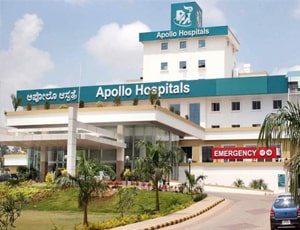
Types of Pacemaker Implantation Surgery in Apollo Hospitals Bannerghatta and its associated cost
| Treatment Option | Approximate Cost Range (USD) | Approximate Cost Range (INR) |
|---|---|---|
| Pacemaker Implantation Surgery (Overall) | 4537 - 8511 | 365946 - 705135 |
| Single-Chamber Pacemaker Implantation | 4556 - 6226 | 374534 - 509567 |
| Dual-Chamber Pacemaker Implantation | 5146 - 7360 | 413027 - 610944 |
| Biventricular (Cardiac Resynchronization) Pacemaker Implantation | 6716 - 8849 | 562356 - 725866 |
| Leadless Pacemaker Implantation | 6317 - 8398 | 502676 - 678950 |
DOCTORS IN 13 SPECIALITIES
FACILITIES & AMENITIES
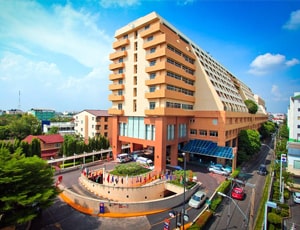
Types of Pacemaker Implantation Surgery in Vejthani Hospital and its associated cost
| Treatment Option | Approximate Cost Range (USD) | Approximate Cost Range (THB) |
|---|---|---|
| Pacemaker Implantation Surgery (Overall) | 16016 - 23515 | 582837 - 838661 |
| Single-Chamber Pacemaker Implantation | 16658 - 19300 | 578989 - 672975 |
| Dual-Chamber Pacemaker Implantation | 18081 - 21443 | 628327 - 772696 |
| Biventricular (Cardiac Resynchronization) Pacemaker Implantation | 20510 - 23207 | 706862 - 828001 |
| Leadless Pacemaker Implantation | 18045 - 21098 | 630721 - 762195 |

Types of Pacemaker Implantation Surgery in Fortis Hospital and its associated cost
| Treatment Option | Approximate Cost Range (USD) | Approximate Cost Range (INR) |
|---|---|---|
| Pacemaker Implantation Surgery (Overall) | 4073 - 7587 | 336425 - 625201 |
| Single-Chamber Pacemaker Implantation | 4074 - 5577 | 334044 - 456804 |
| Dual-Chamber Pacemaker Implantation | 4552 - 6628 | 374255 - 540723 |
| Biventricular (Cardiac Resynchronization) Pacemaker Implantation | 6077 - 8116 | 499604 - 666489 |
| Leadless Pacemaker Implantation | 5595 - 7612 | 457621 - 624675 |
DOCTORS IN 12 SPECIALITIES
FACILITIES & AMENITIES

Types of Pacemaker Implantation Surgery in Zulekha Hospital Sharjah and its associated cost
| Treatment Option | Approximate Cost Range (USD) | Approximate Cost Range (AED) |
|---|---|---|
| Pacemaker Implantation Surgery (Overall) | 6757 - 11130 | 25202 - 41345 |
| Single-Chamber Pacemaker Implantation | 6756 - 9075 | 24335 - 32695 |
| Dual-Chamber Pacemaker Implantation | 7738 - 10014 | 29173 - 36895 |
| Biventricular (Cardiac Resynchronization) Pacemaker Implantation | 9005 - 11415 | 32610 - 41758 |
| Leadless Pacemaker Implantation | 7900 - 10332 | 29323 - 36477 |

Types of Pacemaker Implantation Surgery in Zulekha Hospital Dubai and its associated cost
| Treatment Option | Approximate Cost Range (USD) | Approximate Cost Range (AED) |
|---|---|---|
| Pacemaker Implantation Surgery (Overall) | 6634 - 11283 | 25157 - 41792 |
| Single-Chamber Pacemaker Implantation | 6674 - 8969 | 24451 - 32320 |
| Dual-Chamber Pacemaker Implantation | 7751 - 10202 | 28504 - 36675 |
| Biventricular (Cardiac Resynchronization) Pacemaker Implantation | 9190 - 11346 | 32975 - 41863 |
| Leadless Pacemaker Implantation | 7813 - 10340 | 28906 - 36858 |
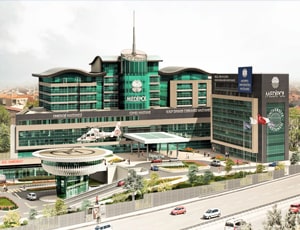
Types of Pacemaker Implantation Surgery in Medipol Mega University Hospital and its associated cost
| Treatment Option | Approximate Cost Range (USD) | Approximate Cost Range (TRY) |
|---|---|---|
| Pacemaker Implantation Surgery (Overall) | 10228 - 14771 | 309993 - 439472 |
| Single-Chamber Pacemaker Implantation | 10205 - 12161 | 307644 - 369228 |
| Dual-Chamber Pacemaker Implantation | 11024 - 14330 | 346506 - 439274 |
| Biventricular (Cardiac Resynchronization) Pacemaker Implantation | 13251 - 17000 | 402601 - 501083 |
| Leadless Pacemaker Implantation | 11219 - 14378 | 342348 - 441269 |

Types of Pacemaker Implantation Surgery in Sarvodaya Hospital and Research Centre and its associated cost
| Treatment Option | Approximate Cost Range (USD) | Approximate Cost Range (INR) |
|---|---|---|
| Pacemaker Implantation Surgery (Overall) | 4076 - 7581 | 336823 - 625433 |
| Single-Chamber Pacemaker Implantation | 4095 - 5570 | 336358 - 456762 |
| Dual-Chamber Pacemaker Implantation | 4576 - 6578 | 374751 - 542172 |
| Biventricular (Cardiac Resynchronization) Pacemaker Implantation | 6091 - 8146 | 497844 - 662770 |
| Leadless Pacemaker Implantation | 5584 - 7603 | 458422 - 624627 |
DOCTORS IN 14 SPECIALITIES
FACILITIES & AMENITIES
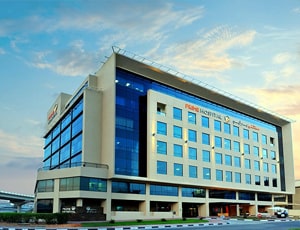
Types of Pacemaker Implantation Surgery in Prime Hospital and its associated cost
| Treatment Option | Approximate Cost Range (USD) | Approximate Cost Range (AED) |
|---|---|---|
| Pacemaker Implantation Surgery (Overall) | 6779 - 11330 | 24294 - 41618 |
| Single-Chamber Pacemaker Implantation | 6640 - 8966 | 24487 - 32986 |
| Dual-Chamber Pacemaker Implantation | 7835 - 10259 | 29041 - 36378 |
| Biventricular (Cardiac Resynchronization) Pacemaker Implantation | 9143 - 11017 | 33595 - 41257 |
| Leadless Pacemaker Implantation | 7738 - 10003 | 28446 - 37363 |
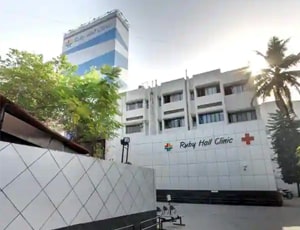
Types of Pacemaker Implantation Surgery in Ruby Hall Clinic and its associated cost
| Treatment Option | Approximate Cost Range (USD) | Approximate Cost Range (INR) |
|---|---|---|
| Pacemaker Implantation Surgery (Overall) | 3787 - 6984 | 308623 - 574172 |
| Single-Chamber Pacemaker Implantation | 3732 - 5064 | 308243 - 420924 |
| Dual-Chamber Pacemaker Implantation | 4187 - 6108 | 340863 - 505392 |
| Biventricular (Cardiac Resynchronization) Pacemaker Implantation | 5693 - 7492 | 452998 - 621577 |
| Leadless Pacemaker Implantation | 5119 - 6964 | 416562 - 566669 |
DOCTORS IN 13 SPECIALITIES
FACILITIES & AMENITIES

Assuta Hospital located in Tel-Aviv, Israel is accredited by JCI. Also listed below are some of the most prominent infrastructural details:
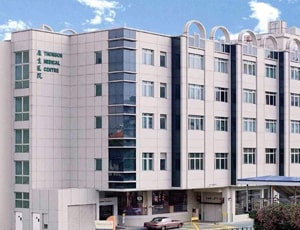
Apart from in-detail treatment procedures available, Thomson Medical Centre located in Thomson Road, Singapore has a wide variety of facilities available for International Patients. Some of the facilities which are provided by them are Accommodation, Airport Transfer, Choice of Meals, Interpreter, SIM, TV inside room. Also listed below are some of the most prominent infrastructural details:
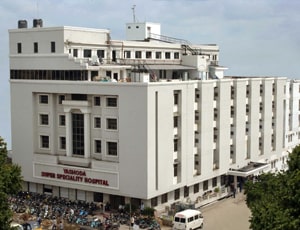
Types of Pacemaker Implantation Surgery in Yashoda Hospital, Malakpet and its associated cost
| Treatment Option | Approximate Cost Range (USD) | Approximate Cost Range (INR) |
|---|---|---|
| Pacemaker Implantation Surgery (Overall) | 4103 - 7615 | 334046 - 626548 |
| Single-Chamber Pacemaker Implantation | 4110 - 5596 | 334934 - 460013 |
| Dual-Chamber Pacemaker Implantation | 4569 - 6621 | 375061 - 541220 |
| Biventricular (Cardiac Resynchronization) Pacemaker Implantation | 6072 - 8140 | 500959 - 668288 |
| Leadless Pacemaker Implantation | 5585 - 7584 | 458614 - 625699 |
DOCTORS IN 10 SPECIALITIES
FACILITIES & AMENITIES
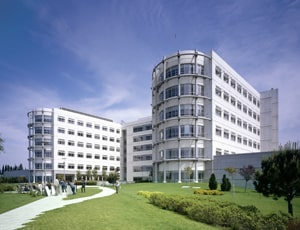
Types of Pacemaker Implantation Surgery in Anadolu Medical Center and its associated cost
| Treatment Option | Approximate Cost Range (USD) | Approximate Cost Range (TRY) |
|---|---|---|
| Pacemaker Implantation Surgery (Overall) | 10344 - 14459 | 300298 - 440281 |
| Single-Chamber Pacemaker Implantation | 10103 - 12173 | 303542 - 368506 |
| Dual-Chamber Pacemaker Implantation | 11238 - 14871 | 345079 - 448195 |
| Biventricular (Cardiac Resynchronization) Pacemaker Implantation | 13556 - 16980 | 413686 - 519289 |
| Leadless Pacemaker Implantation | 11223 - 14520 | 337887 - 445488 |

Types of Pacemaker Implantation Surgery in Yanhee International Hospital and its associated cost
| Treatment Option | Approximate Cost Range (USD) | Approximate Cost Range (THB) |
|---|---|---|
| Pacemaker Implantation Surgery (Overall) | 15962 - 23937 | 573489 - 835101 |
| Single-Chamber Pacemaker Implantation | 16500 - 19004 | 593226 - 673617 |
| Dual-Chamber Pacemaker Implantation | 17890 - 21077 | 633239 - 761326 |
| Biventricular (Cardiac Resynchronization) Pacemaker Implantation | 19838 - 23324 | 720587 - 845734 |
| Leadless Pacemaker Implantation | 18355 - 21399 | 641087 - 745683 |
A pacemaker is a tiny, battery-operated device that ensures your heart beats at the right speed. Surgery is required to implant the pacemaker, usually beneath the skin near your collarbone. It's also known as a cardiac pacing device.
A pacemaker implant is a small device that weighs around 20 g to 50 g and is the size of a matchbox. It has a pulse generator with a battery, a tiny computer circuit, and a few wires called pacing leads. This system is attached to the heart and it emits signals through the wires. The pacing rate or the rate of electrical impulses can be adjusted as per the requirement of the body and be accordingly programmed. It can sense if a heartbeat is missed or if the heart is beating too slowly. Accordingly, it starts sending a steady signal to normalize the beating of the heart. If the beats are normal, then it simply does not send any signal.
Usually, a patient is kept under observation for more than a day after the pacemaker implantation surgery. It takes around six weeks for the patient to get used to the implanted device. Heavy work must be avoided initially. One should ensure that the concerned arm is not rendered immobile during this time to prevent a frozen shoulder. A physiotherapist can exactly show the movements that you need to perform to keep your arm healthy. Carry the duly filled pacemaker implant card for emergencies to avoid any unwanted situation.
Ask your healthcare adviser for the best multiple options and choose the one that meets your expectations
Pacemaker Implantation Surgery package cost in Hungary has different inclusions and exclusions. Some of the best hospitals for Pacemaker Implantation Surgery offer a comprehensive package that covers the end-to-end expenses related to investigations and treatment of the patient. Typically, the package cost of Pacemaker Implantation Surgery in Hungary includes the expenses related to the surgeon's fee, anesthesia, hospital, meals, nursing and ICU stay. A prolonged hospital stay due to delayed recovery, new diagnosis and complications after surgery may increase the cost of Pacemaker Implantation Surgery in Hungary.
Pacemaker Implantation Surgery in Hungary is offered by multiple hospitals across the country. For quick reference, the following are some of the leading hospitals for Pacemaker Implantation Surgery in Hungary:
After discharge from the hospital, the patient has to stay for another 14 days in the country for complete recovery. This time frame is important to ensure that the surgery was successful and the patient is fit to fly back.
There are certain expenses additional to the Pacemaker Implantation Surgery cost that the patient may have to pay for. These are the chanrges for daily meals and hotel stay outside the hospital. The per day cost in this case may start from USD 50 per person.
There are many cities that offer Pacemaker Implantation Surgery in Hungary, including the following:
After the Pacemaker Implantation Surgery takes place, the average duration of stay at the hospital is about 3 days. This phase is important to ensure that the patient is recovering well and is clinically stable. During this time, several tests are performed before the patient is deemed suitable for discharge.
There are more than 1 hospitals that offer Pacemaker Implantation Surgery in Hungary. The above listed clinics are approved to perform the surgery and have proper infrastructure to handle Pacemaker Implantation Surgery patients. Apart from good services, the hospitals are known to follow all standard and legal guidelines as dictated by the local medical affairs body or organization.
Some of the most sought after medical specialists for Pacemaker Implantation Surgery in Hungary are: